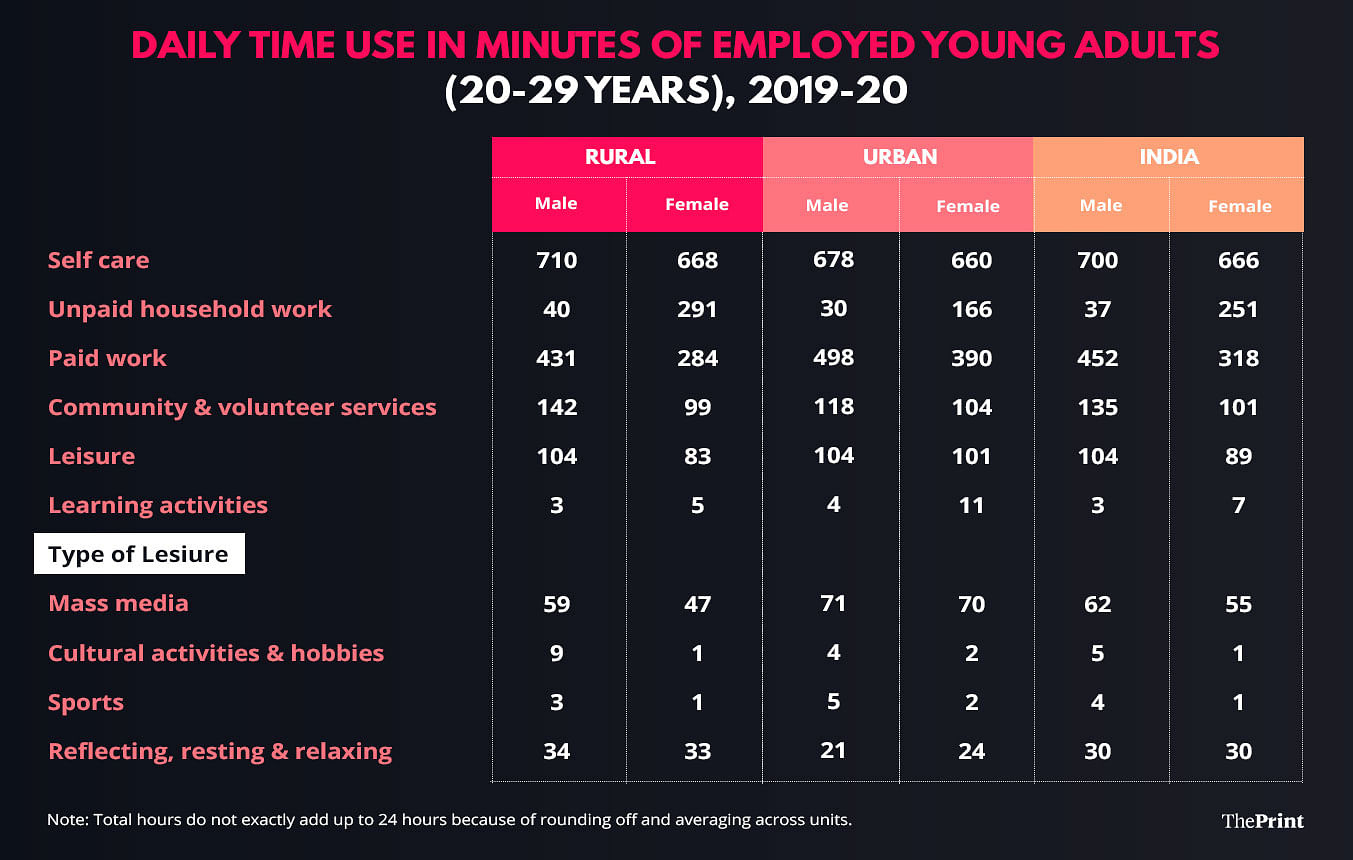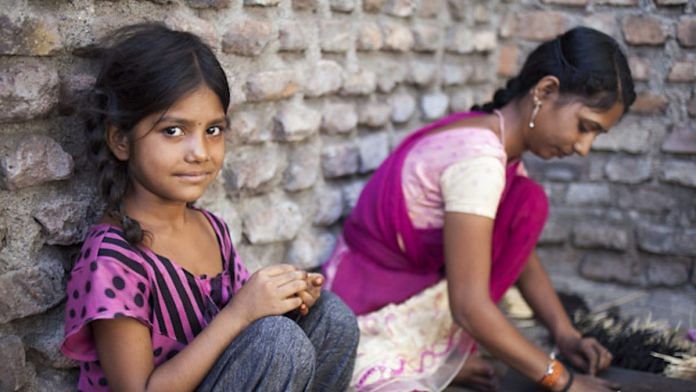Young adults in their 20s are the backbone of a country. These are the years in an individual’s life when some are completing their education while others are at the start of their careers. Many get married and take up new responsibilities for their families. With an average age of 29, India has one of the youngest populations in the world.
People in this age group today would be working for the largest number of years going forward and thus, contribute most to the expansion of the Indian economy.
How young men and women spend their time, therefore, provides us with a clue about the functioning of a society.
Also Read: Young married women are sleeping less and working more in Indian homes, time-use data shows
The divide among young adults
Using national representative data from the time use survey 2019-20 for India, we explore how an average employed young adult in India spends their day and if the pattern differs for men and women. As per the survey, around 78 per cent and 70 per cent of young men in rural and urban India, respectively, were in paid work and the same ratios were 16 per cent and 17 per cent for young women. The survey classifies a person as ‘employed’ if they are in paid work during the major time of the reference year (six months or more), irrespective of the number of hours worked.
On average, young men in urban India worked the longest hours — 8.5 hours daily, followed by just over 7 hours among young men in rural India. Employed young women in urban areas worked for 6.5 hours, while in the rural areas, time spent in paid work was around 4 hours and 45 minutes on average. The pattern is suggestive of a larger proportion of employed women in part-time employment, especially in rural areas.
While young women in paid work spent less time working for monetary returns compared to men, they spent much more time in domestic work. Employed young women in paid work in rural India spent about 4 hours and 50 minutes on household chores while their counterparts in urban areas spent around 2 hours and 45 minutes on domestic work. In contrast, employed young men spent only 40 and 30 minutes in rural and urban areas, respectively, carrying out domestic work.
Also Read: No cabaret, crooning or cocktails: How laws impact women in India’s hospitality industry
What does marriage do?
Further analysis of daily time use carried out by taking into consideration the marital status of young adults reveals how marriage shifts the burden of domestic work and childcare onto women. An unmarried employed young woman spent around 1.5 hours on these activities while her married counterpart spent around five and half hours.
In contrast, an unmarried employed man spent around 25 minutes in domestic work while a married man in paid work spent around 47 minutes. In short, marriage does not seem to make much of a difference to men’s daily time use pattern, but it does for women, and the change is significant.
Young men, irrespective of their employment status, were more likely to be involved in community and social work, compared to corresponding groups of young women. This difference is much higher in rural areas. It points potentially to stricter gender norms faced by women that restrict their mobility and participation in such activities.
As far as time spent in leisure activities is concerned, on average, all young employed adults spent around 1 hour and 45 minutes on them except employed rural young women who spent around 1 hour and 20 minutes, reflecting perhaps more time taken for housework. A married young woman in paid work enjoyed the least time in leisure activities compared to all other groups.
Among the various types of leisure activities, the majority of time was spent on mass media – around 1 hour and 10 minutes per day by young employed adults in urban areas. In rural areas, young employed men spent around an hour on mass media activities while women spent around 50 minutes.
While around 20 to 34 minutes every day on average were spent resting and reflecting by young adults in paid work, their participation in sports and cultural activities was negligible, even among men. Fifteen per cent of young men in education and 16 per cent of young men who are unemployed reported to be participating in sports activities. For the rest of young adults, less than 1 in 10 spent time in sports/exercises, and the ratio has a huge gender divide, especially in rural areas. Clearly, the re-balancing of leisure activities towards some physical activity would result in a healthier lifestyle for young adults.
Finally, and not surprisingly, the single largest group of activity is hours spent on sleeping and self-care, which take about 11 to 12 hours. The least amount of time was spent by young women in urban areas — on average, 11 hours on self-care and sleep, while young men in rural areas spent the maximum time, nearly 11 hours and 50 minutes in the same activity.
The above pattern of how young Indian adults in paid work spent their time provides us with a glimpse of rural-urban and gender-wise differences in India.

Vidya Mahambare is a Professor of Economics and Director (Research), Great Lakes Institute of Management, Chennai, Sowmya Dhanaraj is a Senior Research Fellow, Good Business Lab, and Shambhavi Chandra is a graduate of Madras School of Economics. Views are personal.
(Edited by Humra Laeeq)



